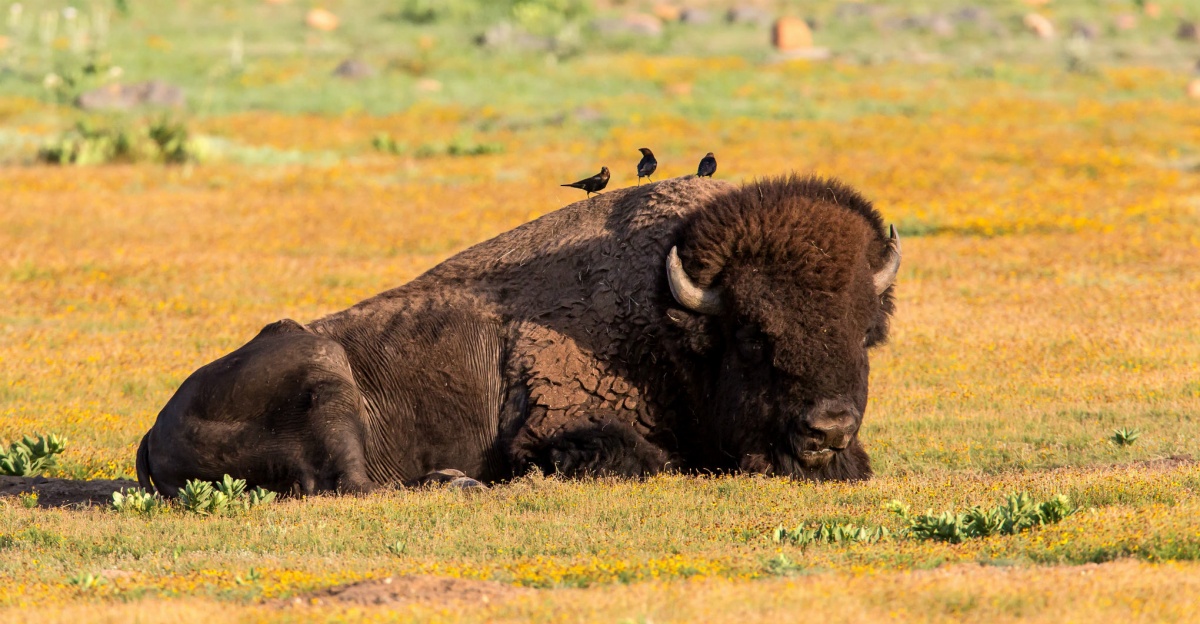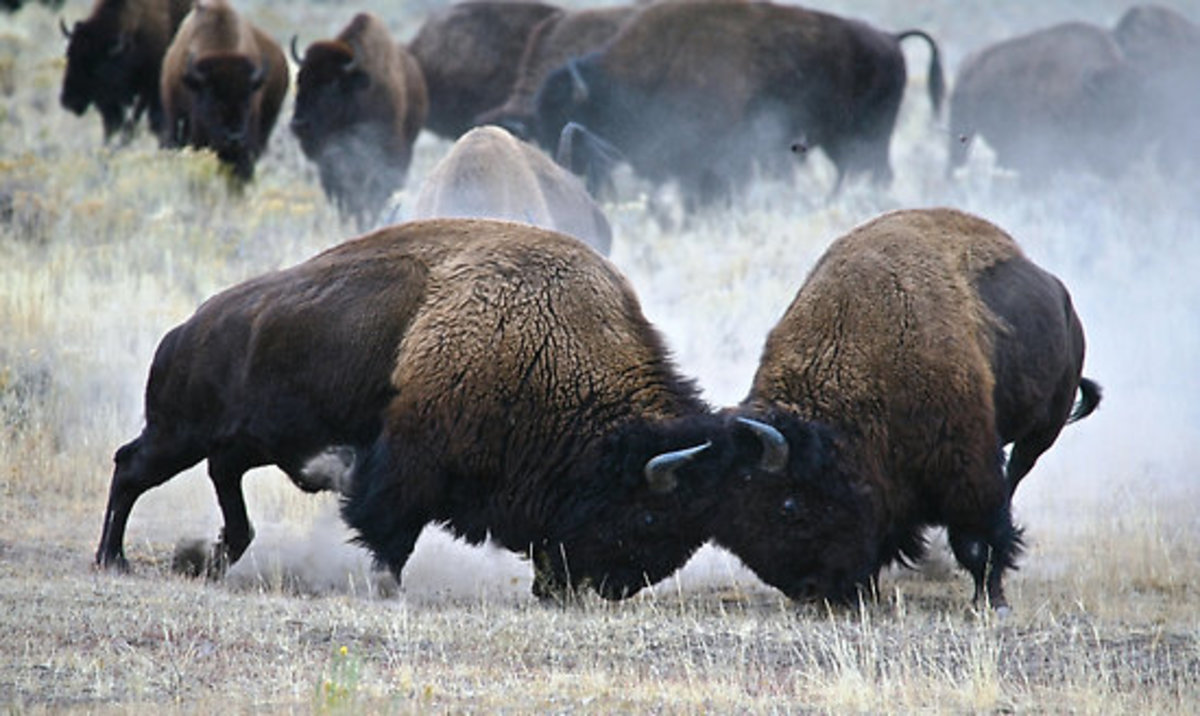





 This species is most commonly found on open plains. They also frequent river valleys, grasslands, semiarid lands, and prairies. |
 they feed primarily on plants. They are mostly grazers that eat grasses and sedges rather than searching for fruit or other plants. |

|
Much of their mass comes from their large hump. Situated above the shoulders, their hump is supported by long vertebrae. Unlike camels, which store fat in their humps, bison humps are composed of strong muscle. This muscle helps them plow through the snow to find food.
This mass destruction was fueled by a need for easy prey. These creatures are the largest native mammals on North America, weighing as much as 2,000 lbs. - a whole ton! - in the wild. That is a lot of meat and fur! Unfortunately, gluttony and greed caused serious population decline in the species.
Sadly for plains bison, the 19th century slaughter was no joke. Scientists estimate that, prior to commercial hunting, approximately 30 - 60 million bison ranged from Canada to northern Mexico. By 1890 only 1,000 bison were left standing.